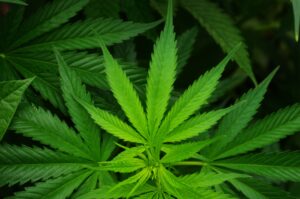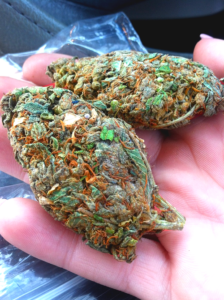
Weeds in Surfers Paradise: A Complete Guide for Homeowners, Gardeners & Property Managers
Surfers Paradise is one of Queensland’s most iconic urban-coastal destinations—a place where modern city living meets subtropical natural beauty. But while the region’s warm weather, high humidity levels, and sandy soils support lush palms and vibrant ornamentals, these same conditions create a paradise for fast-spreading, invasive weeds.
Whether you’re a homeowner trying to maintain a neat lawn, a property manager overseeing landscaped spaces, or someone interested in local ecology, understanding how weeds behave in this unique seaside environment is essential. This comprehensive guide explores the most common weeds in Surfers Paradise, how they spread, why they thrive, and what steps you can take to control them effectively.
1. Why Weeds Thrive in Surfers Paradise
Surfers Paradise’s environment is distinct from other suburbs on the Gold Coast. The combination of coastal breezes, salt exposure, sandy soils, and a warm subtropical climate causes weeds to grow aggressively throughout most of the year.
Here are the major factors that contribute to weed growth:
1. Warm Climate & Mild Winters
Surfers Paradise rarely experiences frost. This allows many tropical and subtropical weeds to grow year-round, with accelerated growth during summer storms.
2. Sandy & Disturbed Soils
Weeds such as crowsfoot grass, nutgrass, and horsetail sheoak seedlings thrive in the loose, sandy soils common across the beachfront suburbs.
3. High Foot Traffic & Urban Landscaping
Surfers Paradise is densely populated and attracts millions of visitors annually. Lawns, public gardens, resorts, and construction zones create disturbed environments where weeds quickly colonize.
4. Coastal Winds & Stormwater Movement
Wind disperses lightweight seeds. Coastal stormwater runoff also carries weed seeds into waterways and landscaped areas, expanding spread.
5. Invasive Species Introduced Through Tourism & Trade
Some weed seeds hitchhike on vehicles, boats, imported plants, soil, or even clothing—making Surfers Paradise a hotspot for new weed incursions.
2. Common Weeds Found in Surfers Paradise
Below are the most frequently encountered weeds in lawns, gardens, parks, and coastal habitats around Surfers Paradise.
1. Nutgrass (Cyperus rotundus)
One of the most invasive weeds globally, nutgrass spreads rapidly through underground “nutlets.”
Where it thrives: lawns, mulch beds, sandy soils
Why it’s a problem: extremely difficult to eradicate and competes for nutrients
2. Crowsfoot Grass (Eleusine indica)
A common lawn weed that spreads along pathways and compacted soil.
Key features: white seed heads, rosette shape
Thrives in: hotspots with high foot traffic and heat
3. Singapore Daisy (Sphagneticola trilobata)
A vine-like, fast-spreading groundcover that smothers native plants.
Where it dominates: waterways, gardens, verges
Regarded as: a restricted invasive plant in Queensland
4. Camphor Laurel (Cinnamomum camphora)
An environmental weed and declared pest tree.
Issues it causes: absorbs large amounts of soil moisture, outcompetes natives, spreads via birds
5. Broadleaf Weeds (e.g., Bindii, Dandelion, Clover)
Found in lawns during warm months.
Problems: prickly seed heads, uneven turf, rapid seed spread
6. Lantana (Lantana camara)
One of Australia’s worst invasive species.
Where seen: bushland edges and neglected properties
Risk: toxic to pets and livestock
7. Asparagus Fern (Asparagus aethiopicus)
A shade-tolerant invasive weed with tuber roots.
Common locations: resorts, tropical gardens
Spreads via: birds feeding on berries
8. Coastal Morning Glory (Ipomoea cairica)
A fast-climbing vine that invades fences and gardens.
Problem: smothers vegetation and grows aggressively in sandy soils
3. How Weeds Spread in Surfers Paradise
Understanding weed spread is essential for long-term prevention.
Seed Dispersal Through Wind
Beachfront winds blow lightweight seeds across parks, rooftops, and open lawns.
Runoff After Rainfall
Heavy summer storms wash seeds into gullies, drainage lines, and landscaped areas.
Human Activity
Footwear, vehicles, surfboards, and beach equipment unknowingly move seeds.
Birds & Wildlife
Fruit-bearing weeds like camphor laurel and asparagus fern spread via droppings.
Poor Soil Health
Areas lacking organic matter, such as sandy beachfront soil, give weeds a competitive advantage.
4. Weed Impacts on Homes, Gardens, and the Local Environment
Weeds pose several risks when left unmanaged:
1. Damage to Lawns & Gardens
Nutgrass, crowsfoot grass, and bindii degrade lawn quality and increase maintenance costs.
2. Threats to Native Biodiversity
Weeds like lantana and Singapore daisy suffocate native plant species, disrupting ecological balance.
3. Fire Hazards
Some weeds become dry fuel loads during hot weather.
4. Reduced Property Appeal
Tourism-dependent suburbs like Surfers Paradise rely on well-maintained landscapes.
5. Increased Pest Activity
Weedy areas can harbour mosquitoes, cane toads, and rodents.
5. Weed Control Methods for Surfers Paradise
Here are the most effective management strategies.
A. Manual Removal
Suitable for young weeds or small infestations.
Best practices:
- Remove weeds after rainfall for easier pulling
- Extract entire root systems
- Dispose of seeds and runners in green waste bins
Avoid: leaving fragments of vine weeds like morning glory or asparagus fern.
B. Herbicides (Legal, Safe Use)
Many weed situations require chemical control, especially nutgrass and large environmental weeds.
Common herbicide categories include:
- Selective herbicides (for lawn weeds)
- Non-selective herbicides (for paths, driveways)
- Woody weed herbicides (for trees like camphor laurel)
Note: Always follow Queensland regulations and manufacturer instructions.
For guidance, refer to:
Queensland Government Weed Control Resources:
https://www.qld.gov.au/environment/plants-animals/plants/herbicides
C. Mulching and Soil Improvement
Mulching helps suppress weed seed germination.
Improving soil health with compost and organic matter reduces future weed growth.
D. Lawn Care Improvements
Healthy lawns naturally resist weeds.
Improve lawn health through:
- Core aeration
- Overseeding
- Regular mowing
- Top-dressing sandy soils
St Augustine, Couch, and Zoysia grasses grow well in Surfers Paradise’s climate.
E. Professional Weed Control Services
For persistent or large-scale problems, professional help may be needed.
Experts use industry-regulated herbicides and advanced equipment.
Helpful resource:
City of Gold Coast – Pest & Weed Management
https://www.goldcoast.qld.gov.au
6. Preventing Future Weed Invasions
Prevention is more effective—and cheaper—than treatment.
1. Maintain Thick, Healthy Turf
Bare soil invites weeds.
2. Use Weed-Free Soil & Mulch
Check suppliers for certification.
3. Reduce Soil Disturbance
Construction areas and new garden beds are weed hotspots.
4. Clean Equipment & Footwear
Especially after walking through parks or bushland.
5. Remove Invasive Trees & Shrubs Early
Small seedlings are easy to control compared to mature lantana or camphor laurel.
6. Monitor After Storms
Identify new weeds early before they establish.
7. Weeds in Coastal vs. Inland Areas of Surfers Paradise
Even within a single suburb, weed behaviour differs.
Coastal Zones (Near the Beachfront)
These areas experience:
- high winds
- salt exposure
- sandy soil conditions
Common weeds:
nutgrass, crowsfoot grass, coastal morning glory, pigweed, spurge
Inland Urban Areas (Residential & Commercial)
These plant in more fertile soils and irrigated gardens.
Common weeds:
broadleaf weeds, clover, bindii, lantana, asparagus fern, camphor laurel
8. Environmentally Friendly Weed Management
Many residents prefer eco-friendly solutions.
Here are sustainable methods that work:
1. Boiling Water on Hard Surfaces
Useful for small weeds in cracks.
2. Natural Mulches
Suppress seed germination naturally.
3. Solarisation
Cover soil with clear plastic to heat and kill seed banks.
4. Native Landscaping
Native plants are more resilient and compete well against weeds.
Helpful resource:
Gold Coast Native Plant Guide
https://www.goldcoast.qld.gov.au/environment
9. Weed Laws and Regulations in Surfers Paradise (Queensland)
Certain invasive plants are classified as restricted matters under the Biosecurity Act 2014.
Residents must:
- avoid growing restricted plants
- not distribute invasive plants
- control declared pests on their property
For a full list, visit:
Queensland Government Invasive Plants List
https://www.qld.gov.au/environment/plants-animals/plants/weeds
10. Seasonal Weed Calendar for Surfers Paradise
Summer (Dec–Feb)
- Rapid weed growth
- Nutgrass + crowsfoot grass peak
- Vine weeds explode after rain
Autumn (Mar–May)
- Seed development stage
- Good time for herbicide control
Winter (Jun–Aug)
- Some weeds slow down
- Broadleaf weeds emerge in cool lawns
Spring (Sep–Nov)
- Pre-emergent herbicides are effective
- Mulch replacement recommended
11. Best Plants to Use Instead of Weedy Species
Replace invasive plants with safe alternatives.
| Invasive Plant | Recommended Alternative |
|---|---|
| Singapore daisy | Native beach daisy |
| Asparagus fern | Lomandra longifolia |
| Morning glory | Hardenbergia violacea |
| Camphor laurel | Tuckeroo tree |
| Lantana | Native lantana (L. montevidensis) |
12. FAQs About Weeds in Surfers Paradise
1. What are the worst weeds in Surfers Paradise?
Nutgrass, Singapore daisy, lantana, asparagus fern, and broadleaf weeds are among the most problematic.
2. Why does nutgrass keep coming back?
Nutgrass produces underground nuts that sprout repeatedly. Control requires consistent treatment over time.
3. When is the best time to remove weeds?
After rain or early morning. Young weeds are easier to pull before seed formation.
4. Are herbicides safe to use in coastal environments?
Yes, when used correctly and following Queensland guidelines. Always avoid runoff into waterways.
5. How often should I treat my lawn for weeds?
Every 8–12 weeks during peak growing seasons for best results.
6. Are any weeds toxic to pets?
Yes—lantana, castor oil plant, and some ornamental weeds can be dangerous.
7. Should I hire a professional weed control service?
Yes, for large, persistent infestations or when dealing with declared pest species.
Conclusion
Weeds are an inevitable challenge in a lush, warm, coastal suburb like Surfers Paradise. From nutgrass to lantana and invasive vines, these plants grow quickly and aggressively if left unmanaged. But with the right knowledge—proper identification, effective control strategies, and ongoing prevention—you can maintain a healthy lawn, vibrant garden, and environmentally responsible property.
I have used Global Weedworld (Globalweedworld@galaxyhit.com) at least 4-10 times and every time it has been a top notch.
He is the best local plug you can find around. He is very pleasant, friendly and fast. He is a lifesaver.
He sells top shelf WEED and other stuffs at moderate prices. I will always recommend this guy when people ask me my ” go-to”.
All you have to do is follow his instructions.
Just send him an email and I bet you will come back for more once you finish with what you bought because his quality is amazing.
Also Contact him on his telegram link telegramhttps://t.me/GlobalweedWorld
⚠️ Know that he do not have telegram channels only the telegram link above

The strain was exactly what I was looking for. It had that perfect balance, and the high was smooth. Also, the packaging was discreet and professional. Really impressed
I’ve been buying online for a while, but this shop’s service and product quality set them apart.
Everything was fresh, potent, and the customer service is outstanding
My first purchase and I’m hooked.
Excellent product and the customer support was super helpful in answering all my questions. Highly recommend this site
From browsing to checkout, everything was seamless. Delivery was on time, and the product exceeded my expectations.
I’ll be recommending this to my friends
I’ve been buying from a lot of different places, but this one stands out. The bud is top-notch, and the prices are reasonable.
Will be ordering again soon! Amazing experience! The product was exactly as described,
and the packaging was on point—safe and odor-free. Thank you!
Third order in a row — flawless. Told my friends — now they’re ordering too. This is how weed buying should be. Clean, easy, reliable.
Best decision I made all week. Real ones know. This site is fire. I don’t usually leave reviews, but this deserved one.
Delivery was crazy fast, and the product… This place is setting the bar for online weed shops. Keep doing what you’re doing. You’ve got a loyal customer for life.
I was worried about ordering online, but the packaging was perfect completely. You can tell they care about their customers. Fast replies and reliable support.